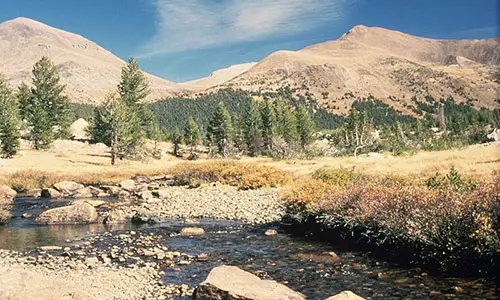Planet earth is an interesting combination of different types of physical features. It is known that earth is covered more with water bodies than with land and within that ¼ part of land, some areas are high, some low while some are dry or full of greenery.
Fact 1 What Are Landforms
Landforms are the various types of physical features of landscape that have been formed by the forces of nature. These geographical features have been formed mainly by erosion or weathering away of the earth’s surface and also by changes in weather conditions like frost or ice, chemical reactions and natural disasters like earthquakes, volcanic eruptions and floods. Landforms affect the weather and climate and maintain balance in the ecosystem of the earth.
Fact 2 Major Landforms
The major landforms are plains and deserts, mountains and valleys, hills and plateaus and islands.
Plains: – Plains are characterized by flat land surfaces that often meet the seas or oceans. These areas are known as coastal plains. Plains that are formed by the movement of rivers known as river plains are very fertile and most of the big cities have developed in these areas for building houses, roads etc are easier. Plains are often densely populated.
Mountains: – One of the highest landforms that have steep sides with peaks and are often conical in shape is the mountains. They stand at a higher level from the earth’s surface. A chain of mountains form a mountain range. Some mountains are covered with snow throughout the year. It depends on the heights of the mountains. Mountains have been formed by forces of nature and so have different names like Volcanic Mountains, Block Mountains and Fold Mountains.
Hills: – Hills are also mountains but are lower as compared to mountains. A row of hills that are higher than the surrounding areas is known as range of hills. These are often covered with grass. Hilly areas are attractive sites for tourists especially for the pleasant weather and beautiful sceneries. Hills are good for cultivation of various types of crops as well as coffee, tea and orchards.
Valleys: – Valleys are formed by the rivers that flow down from the higher mountains forming a v-shape that over the years become wider and forms lowland areas between two mountains or two hills. U-shaped valleys are formed by the movement of glaciers while V-shaped valleys are the effects of erosion. Narrow valleys are known as Canyons. Valleys have fertile soil. These are attractive tourists’ destinations too as the climate is pleasant and thick greenery everywhere.
Plateau: – A plateau is a high land with a flat top. It often looks like a table and is referred to as tableland also. The sides are stiff and plateaus are surrounded by cliffs. This landform has been formed by the flow of magma. When the magma cannot break through the surface of the earth, causes the crust to rise up and thus form plateaus.
Desert: – Desert is a vast sandy area with hardly any rainfall and so vegetation is also scarce. Sand dunes are formed by the strong winds that blow across the desert during sandstorms. Extreme climate is typical of desert regions. Cacti and Baobab trees are the main plants that survive in the deserts. Some date palms grow around oases and the only animal that is visible in the desert is the camel.
Islands: – A piece of land surrounded by water on four sides is known as an island. A cluster or islands together is known as archipelago. Coral islands are extremely beautiful.
Fact 3
Other landforms found on the surface of the earth are peninsula, cape and isthmus.











Leave a Reply